-
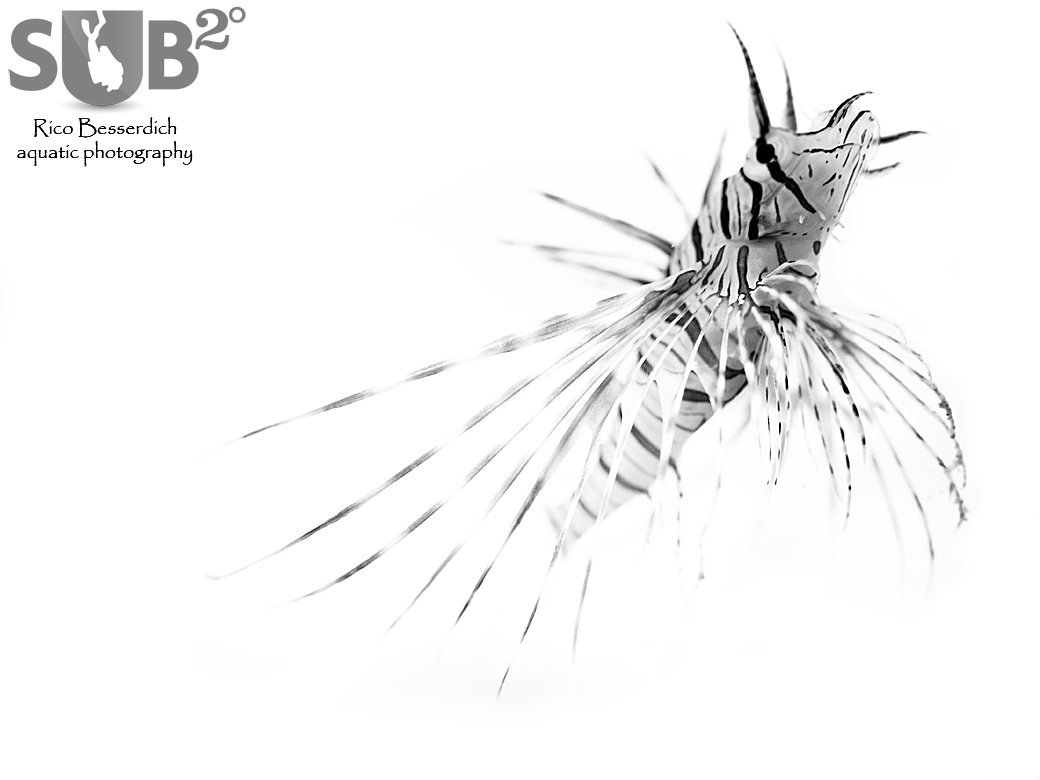
High Key Lionfish
A nice shape always has potential for a cool black and white shot. -
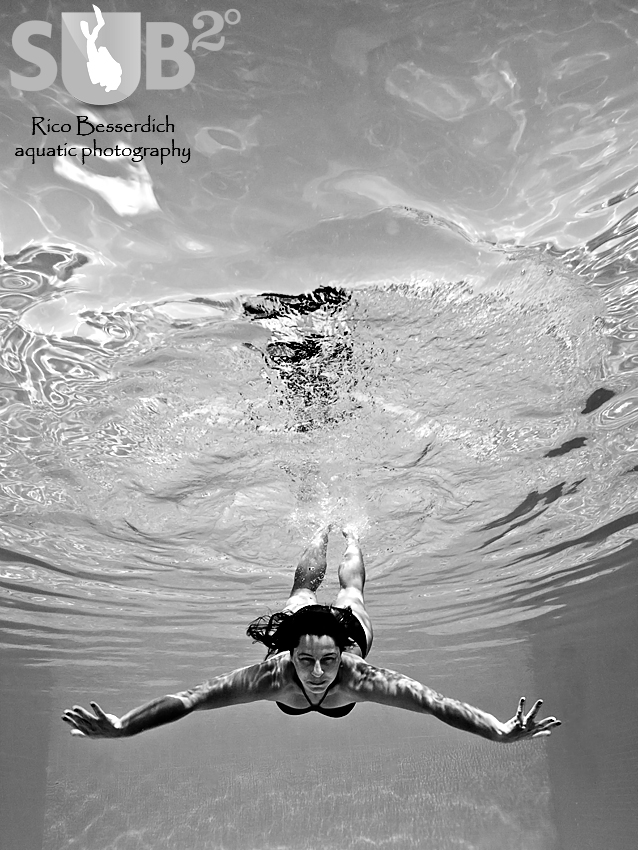
Pool Model
Nice shapes and reflections work well in black and white. -
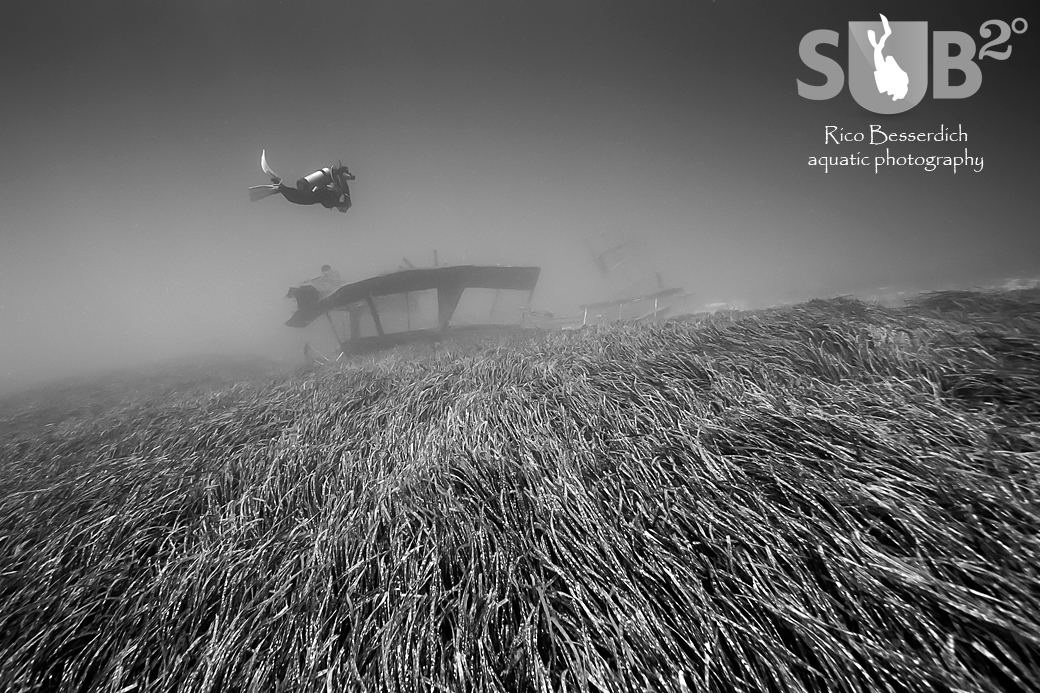
Grasslands
Always watch out for nice structures and try to imagine your planned image in black and white before shooting it. -
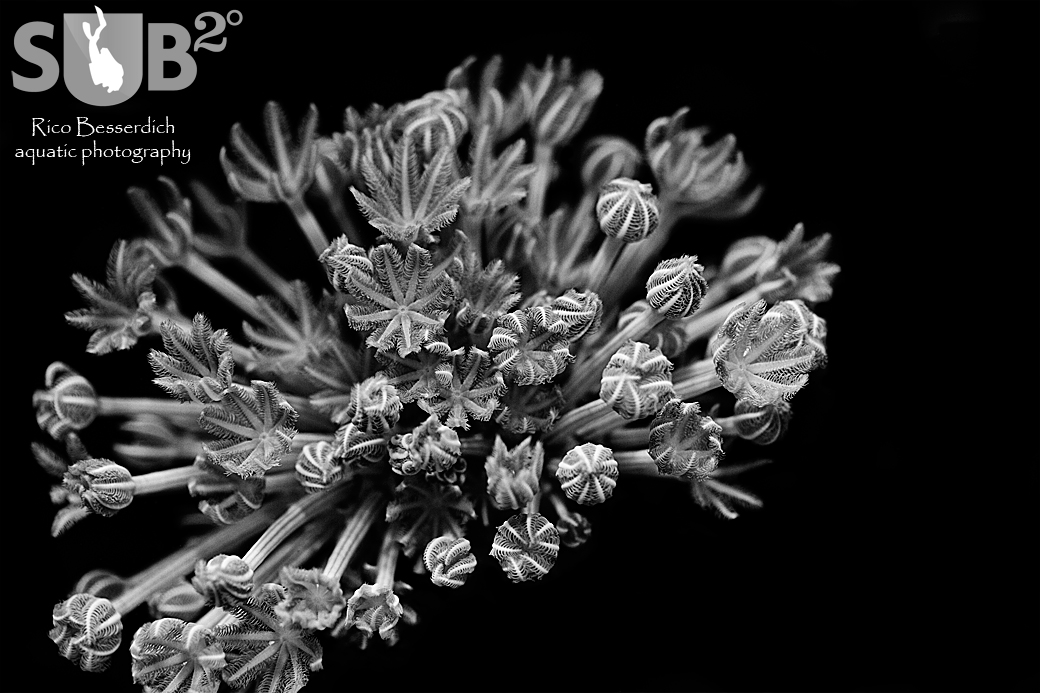
Low Key Coral
Small subjects such as soft corals have a black and white potential too. Again: Look out for shapes and structures. -
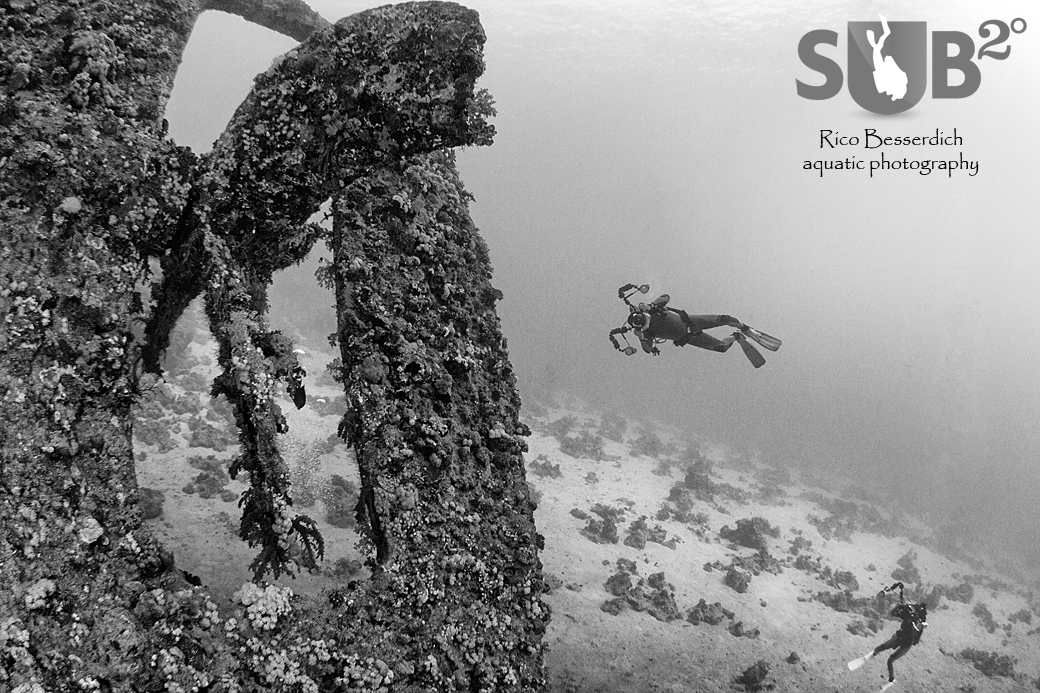
The Dunraven
Shipwrecks are a timeless classic of black and white underwater photography - It always works!
Black and White Underwater Photography
By definition, black and white photography is a "special" category of photography. The term Black and White Photography arose only after the invention of color photography.
Prior to that, we spoke simply of Photography, which shows the real color brightness nuances in achromatic gray scale gradations, including the extreme values black and white. Such photographs were originally called grayscale photos.
Various shades of gray are defined by their brightness. So we talk about light. Awesome! Our main tool of photographic creativity steps on the scene! Let's work with it!
The following possibilities exist to create an underwater photo in Black and White:
- You shoot with an analog camera, using a Black and White film. Old school!
- You shoot with an analog camera, but with color film and convert your color images by software into Black and White (after scanning).
- You shoot with a digital camera and select the Picture Style (or creative style) "Black and White" in the camera's menu.
- You shoot with a digital camera in color and convert the captured image via software (Adobe Lightroom or Photoshop) into a black and white image.
Nowadays the majority of underwater photographers shoot their images with digital cameras. And it is natural and fine to convert a color photograph later by software into black and white. In fact, this is the usual procedure today, but not quite the "pure" black and white photography. Pure black and white photography comes from “pure” black and white analog films.
For black and white underwater photography, we'll need to look at things with different eyes. “Reading the light” is the key here, and doing so brings us back to the core of photography itself.
Light, shadows and textures are excellent design elements of black and white photography. During a dive with the camera AND with black and white photography in mind, it might be a good idea to look out for this:
- How is the light in general (time of day, position of the sun, clouds, light rays, reflections…)?
- Are there any interesting shapes and structures? Fish (preferably not very small ones), wrecks of all kinds, as well as branches or tree trunks or divers swimming around... Stay on the lookout for interesting shapes or forms; bear in mind that colors are not an option.
- Shadows. Where there is light, there are shadows too and they are also important for a successful black and white picture. How do the shadows fall? How is the overall impression of the underwater scene in terms of the interplay of light and shadow?
The "photographic eye" is not available for sale in a shop or elsewhere, but it is learnable and trainable. The point here is to take the necessary time to concentrate on the environment, not just underwater!
Black and white photography underwater is a "calm sound of music", only if the necessary sensitivity for the light is used. A powerful tool to represent underwater scenes and animals in a new light lies in your hands.
Some tips for Black and White underwater photography:
- It often works pretty well to do it with ambient light (without the use of strobes). When the sun is high, clear and bright in the sky, even in 20 (or more) meters, beautiful black and white photos can be created. Depending on depth and light conditions, a higher ISO setting becomes handy.
- True strengths can be used here in the wide-angle photography. Wrecks of all kinds, large fish or fish schools are always great subjects, but any underwater landscape is likely to produce a nice black and white light mood photographically.
- It simply has to be said again: light, shadow, shapes, and structures. Try to direct your attention to these factors.
- Make sure that the shadows still show some details in them. Seen photographically, 100% black is not quite ideal. The same goes for white: Burned out lights (sun) in 100% white, should be avoided if possible. Of course there are exceptions and some brave experimentation has often brought very interesting results (Have fun! Nothing can stop you!).
- Too much shade (dark black) can be brightened with a strobe. Try to see your strobe as a “shadow brightener” and not as an ultimate lightning master. It is your- and not your strobe's- ‘duty’ to read the (ambient) light and use its natural beauty for creating an awesome photo.
- It would be the negligent to think that black and white photography is more "forgiving" than color photography. In fact, the opposite is the case. A colorful fish and coral, as in a color image, can often “hide” present disadvantages. People say, “Oh! What nice colors!” and quickly forget that the picture is a little blurry or not ideally composed. In a black and white image, this escape route no longer exists.
In black and white, photography is reduced to its original form and original expression. It’s a beautiful instrument of creative underwater photography!
I wish you ‘happy bubbles’, safe dives, and lots of awesome new underwater photos, especially black and white ones! :-)
Further Reading:
Featured Posts
-
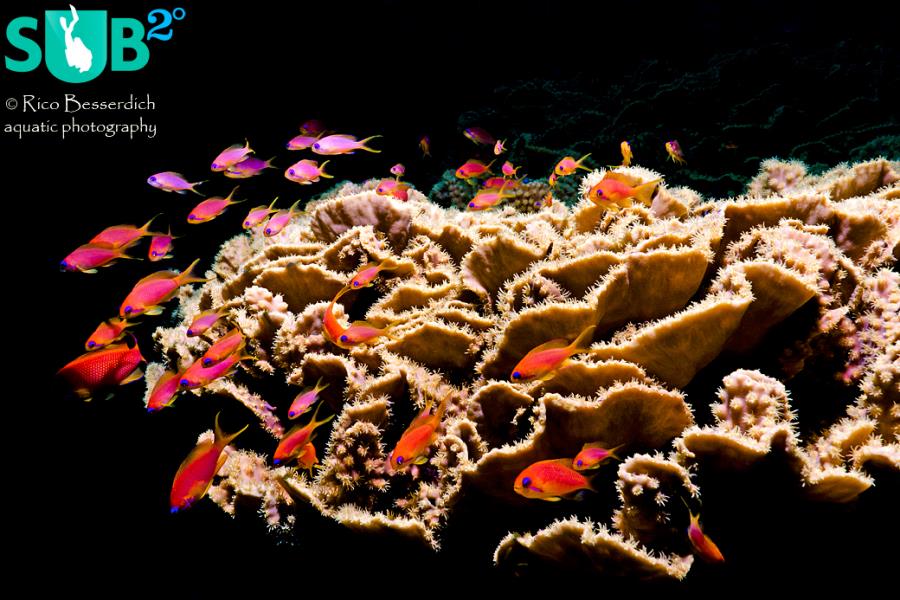
Please "Like" My Photo!
Once you've made some cool underwater shots, you would love to have more people notice your photos, for example by sharing them on Facebook. A path full of potential but lots of nasty obstacles on the way. Let's have a look!
-
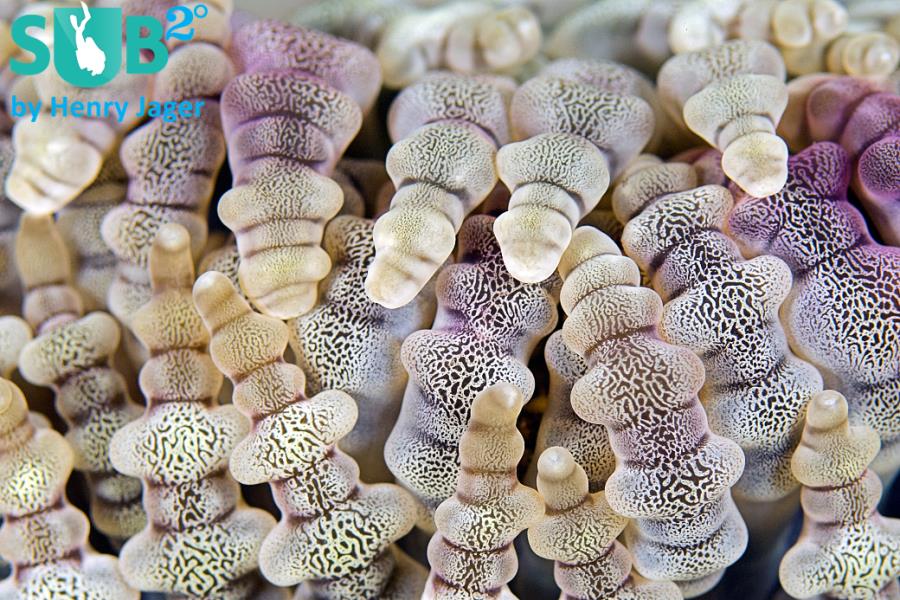
Reef-Art: Looking at the Reef...
Reef-Art shows fascinating insights to an underwater world, 99% of the divers never see. Reef-Art is the "Fine Art" of macro photography. It's a passion! The passion to bring your audience something they don't expect, they h...
-
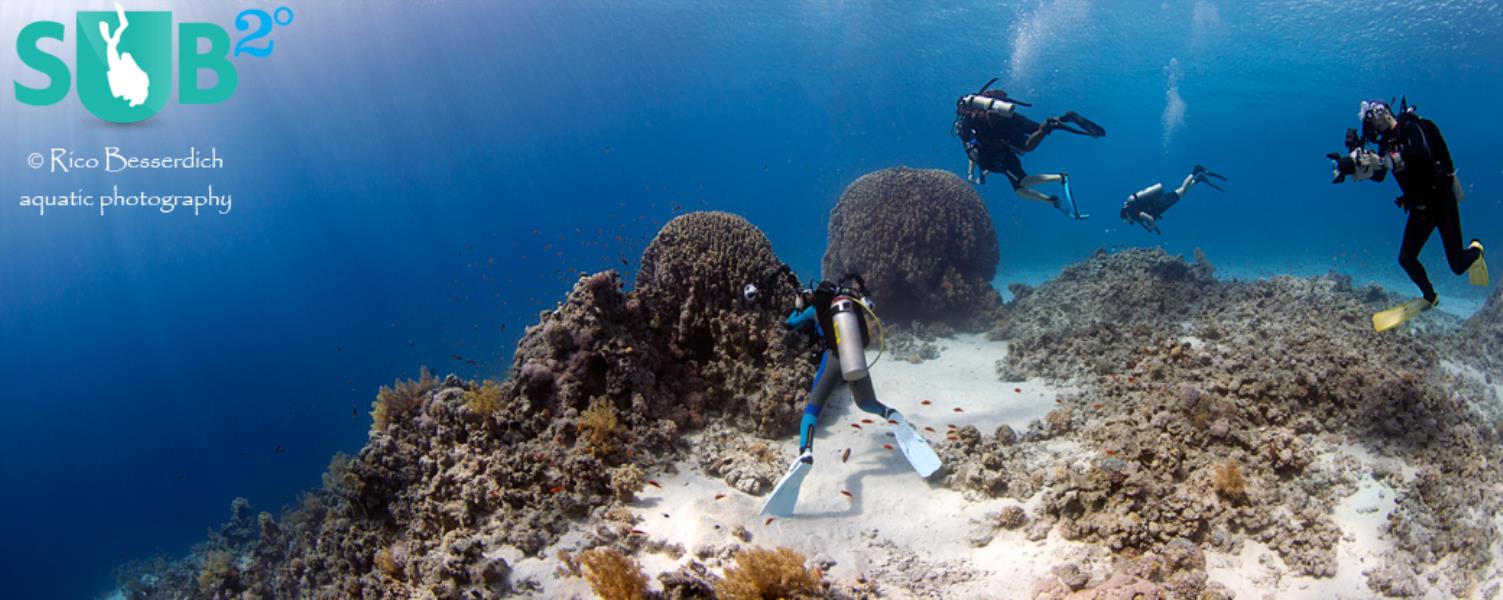
Underwater Photography: Shoot...
Are you ready for huge perspectives in your underwater photographs? Wide-angles are fine but do you want it even wider? Time to check out underwater panorama photography!

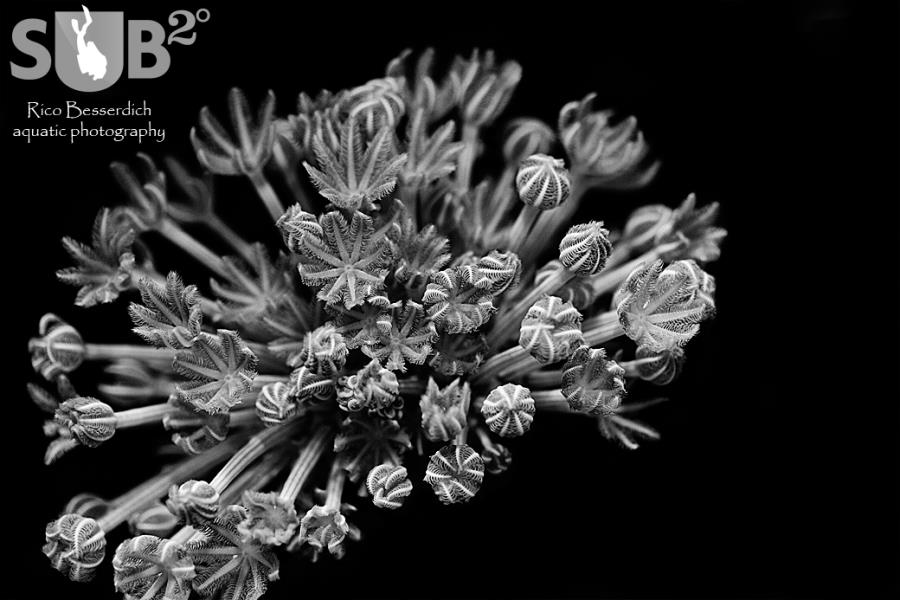
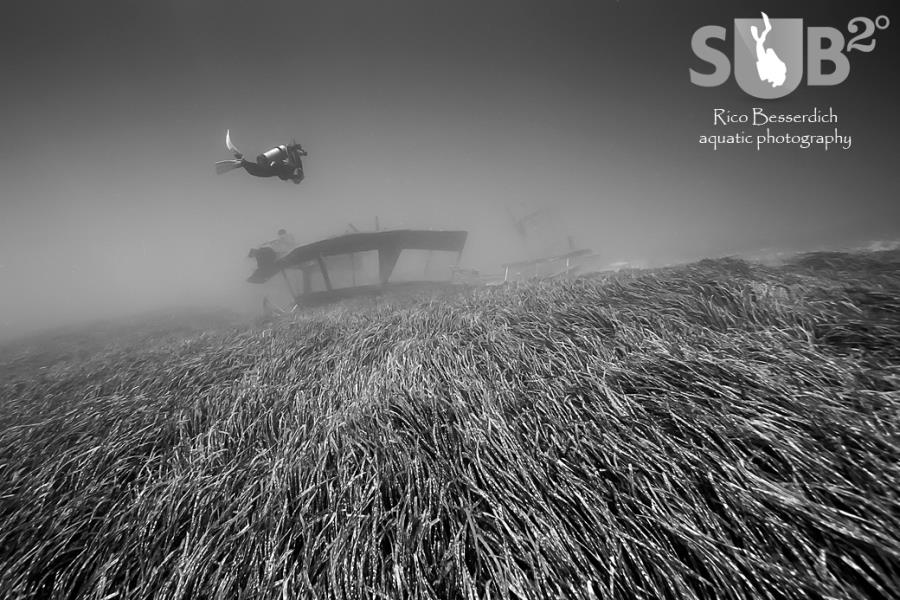
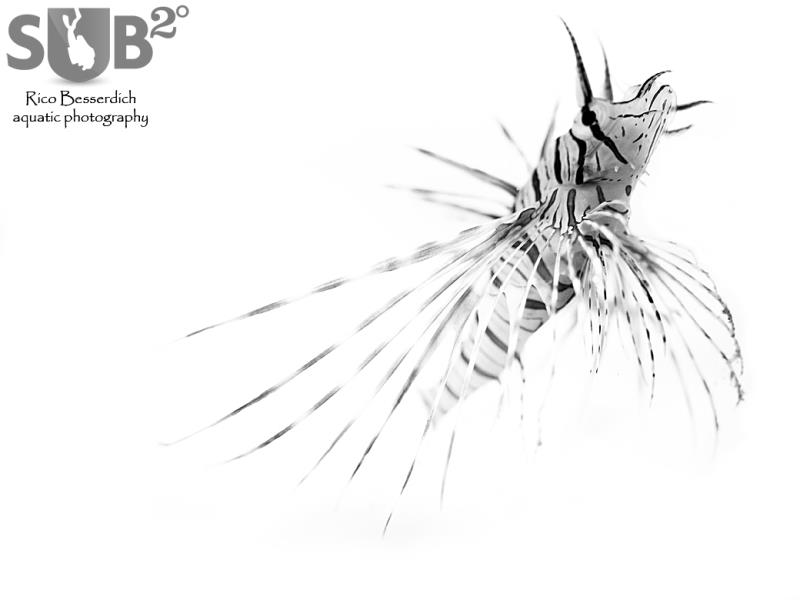


Load more comments